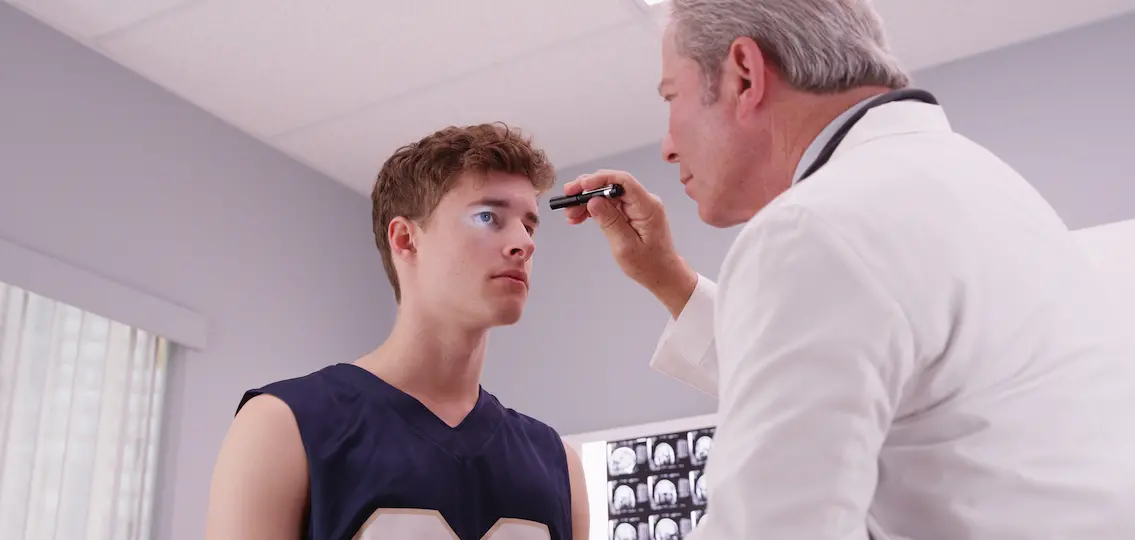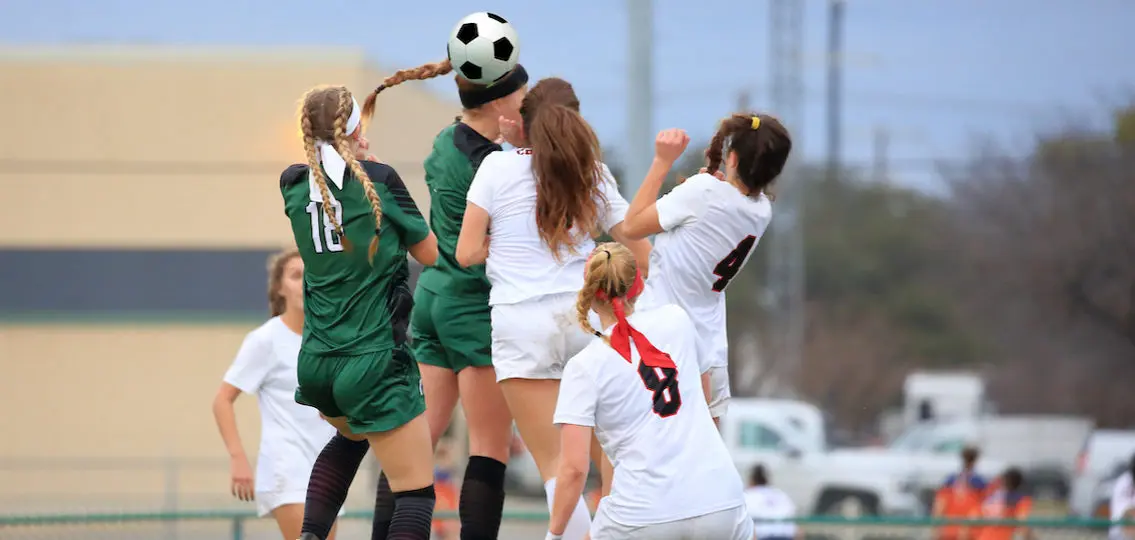For many parents of youth football players, the 2015 movie Concussion was a wake-up call. In the film, pathologist Dr. Bennet Omalu finds long-term brain damage in football players who suffered repeated concussions in the course of normal play. News stories have amplified concerns about concussion rates in football and their long-term impact. Nationally, high school participation in 11-man football has fallen more than 10 percent in the last decade.

But concussions don’t just impact male football players. A recent study in the journal Pediatrics finds that when it comes to concussions, girls who play high school soccer have close to the same risk as boys who play high school football.
Key Study Findings
Researchers looked at high school sports-related concussions in 20 high school sports from 2013 to 2018. They measured susceptibility to injury by looking at athlete exposures. An athlete exposure is defined as one athlete participating in one game or practice in which he or she is exposed to the possibility of athletic injury. Across all sports, the concussion rate was four concussions per 10,000 athlete exposures.
Football had the highest concussion rate, with around 10 concussions per every 10,000 athlete exposures. Girls’ soccer wasn’t far behind, with the second greatest number of concussions, at a rate of 8 per 10,000. The main causes of concussions in young women were heading the ball or colliding with another player.
The researchers recommend future research to monitor trends in concussion rates and the effectiveness of prevention strategies.
What Are Concussions and Why Are They of Concern?
The Centers for Disease Control and Prevention (CDC) defines a concussion as a type of traumatic brain injury caused by a bump, blow, or jolt to the head, or by a hit to the body that causes the head and brain to move quickly back and forth. This fast movement can cause the brain to bounce around or twist in the skull, creating chemical changes in the brain and sometimes stretching and damaging the brain cells.
Concussion symptoms reported by teens include:
- headache or “pressure” in head
- nausea or vomiting
- balance problems or dizziness
- double or blurry vision
- being bothered by light or noise
- feeling sluggish, hazy, foggy, or groggy
- confusion or concentration or memory problems
- just not “feeling right,” or “feeling down”
Parents who think their teen might have a concussion should have them seen by a healthcare provider who has experience in evaluating for concussion. The provider should also provide detailed instructions with regards to returning to school and sports.
How Parents Can Help Prevent Concussions
Concussions are a concern. However, the many benefits of youth sports are well documented by the CDC and other health researchers. Regular physical activity can help children and adolescents import cardiorespiratory fitness, build strong bones and muscles, control weight, reduce symptoms of anxiety and depression, and reduce the risk of developing conditions like diabetes or obesity. The CDC also reports that students who are physically active tend to have better grades, school attendance, cognitive performance, and school behaviors (on-task behavior).
When it comes to concussions, the CDC has these suggestions for parents, with the goal of helping to lower teens’ chances of getting a concussion or other serious brain injury.
Help create a culture of safety for the team:
- Work with their coach to teach ways to lower the chances of getting a concussion.
- Emphasize the importance of reporting concussions and taking time to recover from one.
- Ensure that they follow their coach’s rules for safety and the rules of the sport.
- Tell your teens that you expect them to practice good sportsmanship at all times.
When appropriate for the sport or activity, teach your teens that they must wear a helmet to lower the chances of the most serious types of brain or head injury. There is no “concussion-proof” helmet. Even with a helmet, it is important for teens to avoid hits to the head.

Further Research
Meanwhile, several female soccer players are following the leads of former professional football players in working with medical experts to study brain injuries. As reported by CBS news, former soccer stars Michelle Akers and Brandi Chastain have joined a long-term study into possible cognitive effects of years of headers and collisions. The study, led by neurology professor Robert Stern, will see how chronic traumatic encephalopathy, or CTE, impacts female soccer players.




